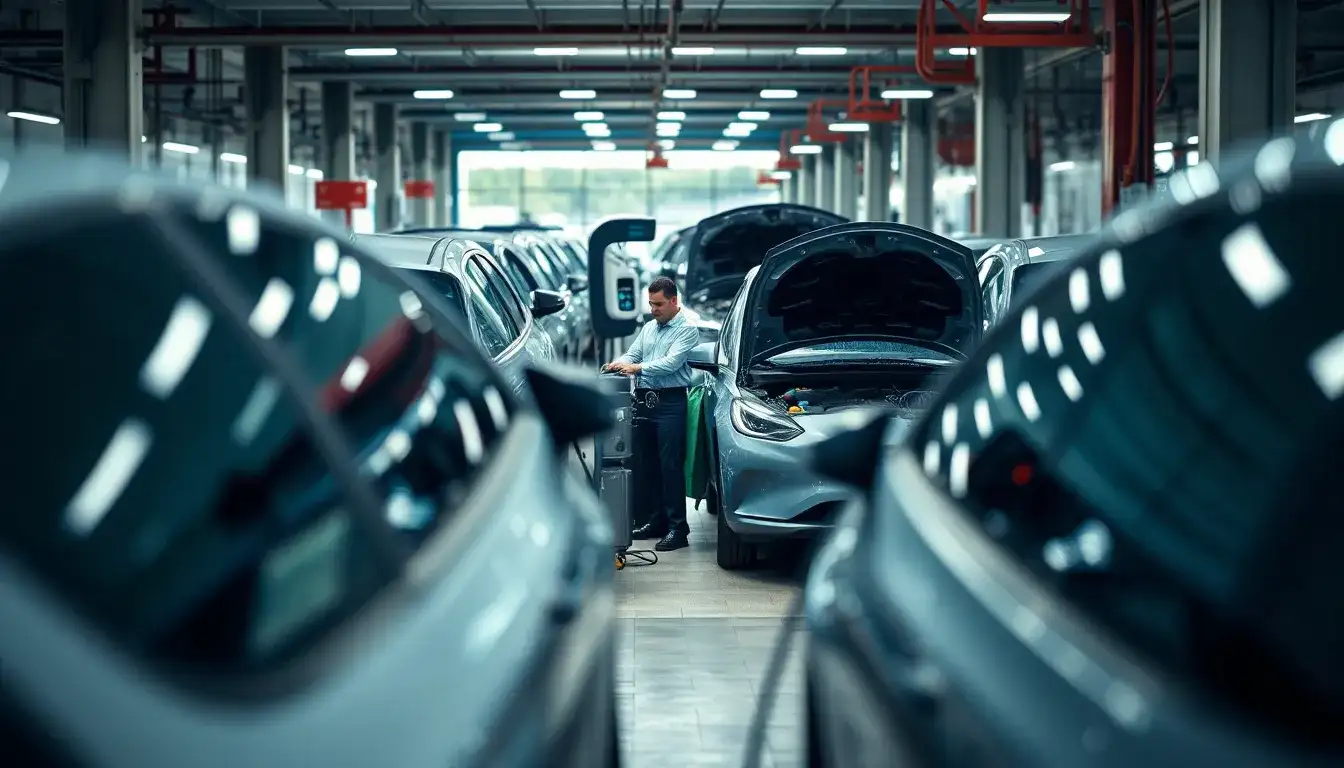
The automotive industry is facing a significant challenge as the number of new energy vehicles (NEVs) in China continues to rise. By the end of 2024, the total number of NEVs is expected to reach 31.4 million. However, there is a severe shortage of qualified technicians for vehicle repairs, with fewer than 20,000 repair shops and less than 100,000 skilled workers in this field. This situation may lead to a dilemma for NEV owners, who could find themselves in a position where they are reluctant or unable to repair their vehicles, or where repair costs become prohibitively high.
Recent media reports have highlighted the frustrations of NEV owners when their vehicles encounter issues. Some owners have faced exorbitant repair bills, such as needing to replace battery modules, with dealership prices exceeding those of third-party repair shops by nearly 10,000 yuan. Additionally, for a brand with a significant number of NEVs on the road, owners may have to wait several weeks for high-voltage system repairs. In some cases, dealerships have been unable to diagnose the issues at all.
For traditional auto repair technicians, tasks such as oil changes and engine repairs are familiar and routine. However, NEVs involve fundamentally different technologies, including advanced electrical and electronic systems. Skills in areas such as high-voltage safety precautions, battery thermal management algorithms, intelligent diagnostic protocols, operational guidelines for 600-volt systems, and interpreting fault codes from battery management systems (BMS) require extensive retraining. Many traditional automotive technicians who do not transition their skills may face unemployment.
The disconnect between the education system and industry needs further exacerbates the talent shortage. Currently, 70% of vocational schools offering NEV repair programs focus primarily on basic disassembly and circuit testing, with less than 30% of curricula covering emerging skills such as intelligent cockpit systems maintenance and autonomous driving sensor calibration. A curriculum evaluation from a leading vocational school revealed that the average update cycle for teaching materials is 28 months, while mainstream NEV manufacturers have shortened their vehicle system iteration cycles to just 6 months.
Furthermore, the lack of qualified instructors in these schools is alarming. Research indicates that 62% of vocational school teachers have never worked with 800-volt high-voltage equipment, and 45% of training equipment remains unused due to insufficient teacher competence. These inadequate teaching conditions make it increasingly difficult to cultivate repair technicians who meet industry standards.
This disconnect also forces companies to bear the costs of retraining new hires. Technicians entering the NEV repair field may require up to 480 hours of specialized training before they can work independently, effectively shifting educational costs onto the end of the supply chain.
For a long time, the automotive repair industry has been criticized for its working conditions and low wages, often involving dirty and labor-intensive tasks. In the era of electrification, technicians also face the risks associated with high-voltage operations, and the rapid pace of technological advancement demands continuous skill upgrades. This leads to increased anxiety and pressure in the workforce, ultimately discouraging new talent from entering the NEV repair sector.
Additionally, brand dealerships often monopolize technical knowledge, leaving many core technologies of the three electric systems (battery, motor, and electronic control) unlicensed for third-party repair shops. This results in a reluctance from third-party shops to perform repairs, and any repairs made outside of dealerships can jeopardize warranties and after-sales support, further hindering the development of the automotive repair aftermarket.
To address the current state of the NEV repair industry, a multi-faceted approach is necessary. Firstly, vocational education must evolve to include practical training in three-electric technologies and intelligent systems. Collaboration between automotive companies and third-party repair shops can help establish training bases and create a comprehensive talent ecosystem.
Moreover, attention must be paid to improving wages and working conditions in the automotive repair sector. Protecting the rights of skilled technicians can significantly reduce talent attrition. Automotive manufacturers should consider breaking down technical barriers and collaborating with qualified third-party repair services to jointly promote the growth of the NEV repair industry.
In conclusion, the shortage of repair talent in the NEV sector is a growing issue that needs urgent attention. With a stark contrast between 31.4 million NEVs and fewer than 100,000 technicians, finding solutions is critical. This challenge affects the rights of millions of vehicle owners and requires coordinated efforts from policymakers, businesses, and educational institutions. Ultimately, even the most advanced NEVs rely on dedicated individuals to ensure their safe operation.







